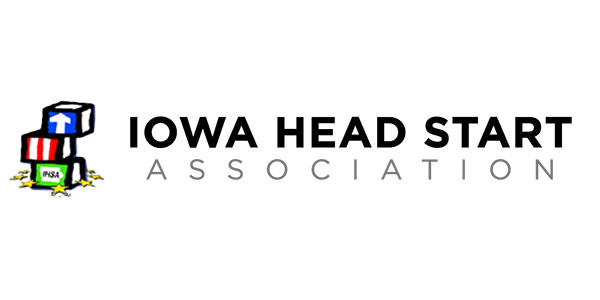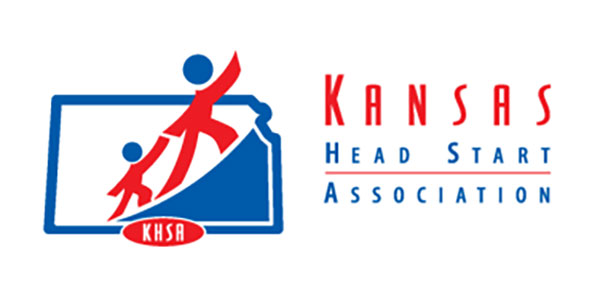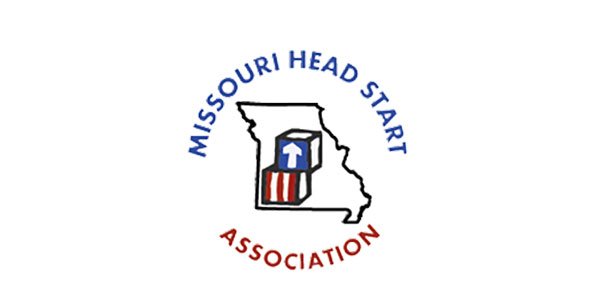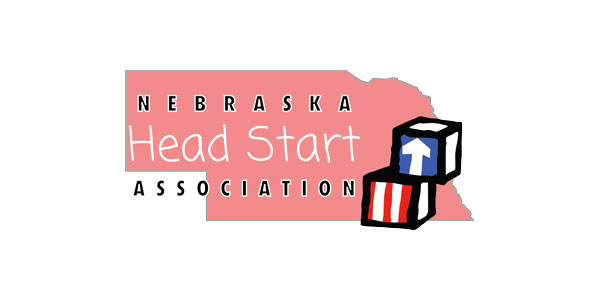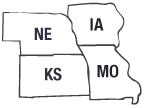Head Start’s Diamond Jubilee
 |
How to celebrate Head Start’s Diamond Jubilee
A Step-by-Step Guide
Introduction
On May 18, 2025, Head Start will celebrate its 60th anniversary. [See Head Start timeline]. Sixty years ago from this date President Lyndon Johnson signed the law creating Head Start. The 60th anniversary is considered the Diamond Jubilee. Diamonds are the hardest substance known to science. If anything can survive 60 years, it has proven it is durable and sustainable. When we celebrate the Head Start Diamond Jubilee, we use this milestone to acknowledge that Head Start is durable and will last into the future. This document will outline the steps you can take to plan and implement an effective celebration of the Head Start Diamond Jubilee.
The seven steps below are suggestions for a process you and your Head Start program can engage in to leverage this once-every-60-years opportunity to communicate to your community, your stakeholders, important and influential leaders, why you matter and why your services matter. Think about how this event can help you accomplish your goals. For example, we often say Head Start is the best-kept secret. Let’s use this event to bring Head Start greater visibility. Many of our programs are struggling with recruitment and being fully staff. Let’s use this event to make Head Start better known and appreciated, creating positive associations that attract parents and future employees to Head Start as a place they want to send their children or want to work. Remind community leaders and other stakeholders why Head Start matters. Let’s tell them what we have been doing for the past 60 years. Those first graduates are now in their sixties. Many are grandparents. The success of Head Start becomes the success of our neighborhoods, communities, counties and states.
The key is to begin early so you have time to plan and execute a “celebration” that raises awareness and gives your program prominence. Think of it as a marketing or communication campaign. Each step outlined below will include links to other documents and resources to help you design, plan and execute this important event in a way that is meaningful to your local communities as well as important to the national celebration of what Head Start has been for six decades.
The steps to success
Step One: Assemble a Team
Celebrating such an important event requires the work of more than a few people and expertise. So, we recommend you put together a team of at least five people and make sure these individuals represent all aspects of your work as a Head Start program: education, family support, health services, and administration. And don’t forget parents or other family members. You also want to have individuals with demonstrated skills around research, planning, human resources, social media use, online video production, and creative expression. Engaging so many people is important because you need their collective work, and you need their expertise, specific knowledge and skills necessary for a successful celebration. Our intention with these recommendations around how to celebrate the Head Start Diamond Jubilee is to encourage you to plan several communication activities and a number of strategically designed events to communicate with target audiences. These events can be as large or small as you want. The very first step is finding people from your program who are interested in the work, have the specific experience or expertise in accomplishing the tasks, and represent an authentic cross section of your program’s work areas and the populations it represents.
Step 2: Establish a Clear Written Purpose Statement
Before this team can be effective it has to have a clear idea of what it is trying to accomplish when we celebrate a 60th anniversary. Yes, we want to have some kind of celebration and acknowledgement but to what end? Why? Writing down your purpose may seem so obvious that you may think it is not necessary. But please do it anyway. It will come in handy throughout the process as you wade through details and decisions. There are just too many possible things you could do that without some focus the effort can become diffused or its effectiveness lessened. A clear purpose statement serves as a North Star to guide you to a successful project. As people suggest all kinds of ideas and directions, a purpose statement will help you assess their merits and how well do they help you address your central purpose.
What is your purpose? Our recommendations here are leaning toward the idea that a birthday celebration is an opportunity to say some important things about what we do and who we are.
If you have trouble summarizing everything in a single purpose statement, break out some of the secondary (though important) ideas as goals. For example, you may want start with a broad idea like “We want to celebrate how we are changing lives and changing communities.” Then you could put a lot of this into how you demonstrate that like stories from your past where you made a different, an older alumni who can talk about his or her life, provide details on Head Start’s comprehensive services. Draw attention to what Head Start is and what it has done in your community or communities.
This acknowledgement of Head Start and its accomplishment at reaching an important milestone becomes an opportunity to talk about the important things your organization does that benefits the community, benefits the children and families, and benefits everyone with whom your program has come into contact. You can draw attention to what your Head Start program has done that is worth paying attention to. You may want to communicate specific things about what your program has done. You may want to shine a light on the unique achievements your program has accomplished to fulfill Head Start’s vision.
If you are still stuck, reread what the Head Start Act of 2007 states as the purpose of Head Start. It reads:
Sec. 636. [42 U.S.C. 9831] It is the purpose of this subchapter to promote the school readiness of low-income children by enhancing their cognitive, social, and emotional development—
(1) in a learning environment that supports children’s growth in language, literacy, mathematics, science, social and emotional functioning, creative arts, physical skills, and approaches to learning; and
(2) through the provision to low-income children and their families of health, educational, nutritional, social, and other services that are determined, based on family needs assessments, to be necessary.
How has your Head Start program accomplished this purpose for 60 years? Your purpose is to make sure that more people, and key influential people, know what you have done and want to do something to ensure your legacy continues, your services are stronger and more effective and to elevate your value in the eyes of the communities you serve.
What we are challenging you with here is to describe as specifically and concretely as possible why enhancing children’s cognitive social and emotional development is an asset to the communities your program serves. According to the Act, this happens in two ways. First by supporting children’s broad development across key domains. Second, to do this through providing the full complement of comprehensive services that address the health, educational, nutritional, social, and economic needs of young children and their families. As you brainstorm this, see if you can arrive at a single sentence or two that summarize what you want to say about your Head Start program.
Your purpose statement should align to these ideas. The basic point is that your Head Start program has been the manifestation of this vision in your local communities. Anyone who cares about the communities should believe and understand why the work you do is important and how effective you are in bringing that to reality.
One final thought: from a marketing communication perspective, it is helpful to emphasize what distinguishes your program from other programs in supporting healthy child development or school readiness of young children. We think for Head Start it lies in the concentration of comprehensive services in a single program with the integrated support and connection to community partners and resources. Another unique feature of Head Start is the centrality of parents in the governance of the program. Few, if any other early childhood programs, can make a similar claim.
Step 3: Create a Message Platform
Very likely your purpose statement confirmed that you want to say some key things about your program. You want to send some concrete, compelling messages that will support your programs goals. That leads to two questions:
- What are those important things we want to say?
- Who do we need to hear these things?
The important things to say are best summarized as Message Points outlined in a Message Platform. We have a sample of a message platform you can start with. We encourage you to think about your strategic priorities (what are your five year goals, for example) and how your messages can support them.
You could refine these questions to focus directly on the 60th anniversary: Who needs to know we’re celebrating our 60th anniversary and how do we make sure they’re aware of it?
The Message Platform will be an important document in your planning. Every time you do any kind of communication—emails, texts, social media posts, media releases, speeches, meetings—ask yourself if it is an opportunity, however briefly, to send one of the messages you developed. For example, if you send an employee newsletter or weekly email, do a series of messages using the same message but highlighting a different proof. You could end or begin a weekly email to employees, a Policy Council or Governing Board with something like this:
“The ABC Head Start program is celebrating 60 years of service in XX Community(ies) or County(ies). That’s a long time! We began before most of you were born. What does it take to last so long? One thing is a proven model of comprehensive services serving the whole child and the whole family. We know we are so much more than a typical child care program. We are a comprehensive child development program including early education, health, family engagement and social services. We hope you feel pride in being part of this legacy. You are who will help us carry this legacy on another 60 years!”
Then in a subsequent one you could still focus on how Head Start is a durable national model but this time emphasizing how Head Start is the national laboratory, how area child care centers, family child care and state preK programs are using Head Start lessons. Notice how this example takes directly from the message platform and over time drives the message home while emphasizes different things. That shows how the message and the related proofs can be valuable, and why it is important to think about that in advance. Remember that it does not have to be perfect. It is a document that can be added to and refined over time. For more message ideas or message content, visit the Head Start Awareness Digital Tool Kit.
Step 4: Identify key target audiences
There is no communication unless there is a sender and a receiver. So who do you want to receive these messages about who you are and why you are important and what you want that audience to do? Make sure you have a list of between 3-5 target audiences you want to prioritize and then connect which messages are most relevant to that audience. What do you want to say to whom?
Taken as separate tasks establishing a message platform and clearly-defined target audiences build an important foundation for the work. Like the foundation of a building, they may not be readily visible, but the integrity of the entire edifice depends on them:
- identify the key or targeted audiences you want to have the greatest impact on because of the work that you’re going to do around the 60th birthday celebration:
- the specific messages you want to send to each.
You may want to add additional and targeted messages you want to send to specific audiences. You could even develop a message platform for each of your target audiences. What you say to staff is different than what you want to say to chambers of commerce, mental health providers, or eligible families. The key is to think strategically about what messages would be most important for an audience to hear that would advance your mission and goals as an organization.
Selecting target audiences is hard because you can always find a good reason to reach out to any specific group of people. Let it be a strategic decision. If we could only reach three audiences which ones would they be? Which ones are connected to your key issues? If we struggle with enrollment, an important audience would be parents and families. If we lack staffing, future employees. But in these examples, there are niche groups that could also be identified such as others who know eligible families such as social workers, medical providers, community groups or apartment managers. Future employees could be reached through others such as high school or college faculty, professional organizations. (Just a wild thought: How well do the family and consumer science teachers at the high schools in your community know about your Head Start program? Pointing out your 60 years of service may be the precise hook to engage them in the importance of your program and the opportunity it could offer their students.)
Selecting target audiences is an exercise in polarity thinking. The larger and broader your audiences are the less impact your communication will have even though it may reach more people overall. Conversely, the narrower and smaller your target group is, the greater the impact but the fewer people you reach. It is a broad and shallow versus narrow and deep trade-off. That means there is no single right way to do it. It depends on what you want to accomplish. However, if your target audience is the “general public,” it is hard to answer a question like what do you want them to know and do regarding your program. If it is community or county leadership, that makes it easier. If it is the voting public, that might be another group. To get you started, here is a list of potential stakeholders most Head Start programs likely have.
One final advantage of selecting clear target audiences is that it helps you narrow down on what kind of media you want to use to communicate your messages and what kind of events you want to host. If the target audience is business owners, speaking at a Rotary Club meeting makes perfect sense. If you are engaging parents, texting them directly using text blast software is an obvious answer. Sometimes you may want to bring wider awareness to members of a certain community. Then buying an outdoor billboard might make sense or holding an editorial meeting with local newspaper editors to talk about your program, what you are planning and op ed or letters to the editor options.
Step 5: Identify Key Events and Communication Activities You Want to Employ.
Once you have the right people around the table, a clear purpose statement that everyone understands and can agree with, and a solid message platform that summarizes what you want to say about yourself, you are now ready to take the important step of identifying what exactly you intend to do over the next year to leverage the 60th anniversary of Head Start to support your program. What will you do to communicate important things about your program (i.e., how will you send those messages), to buoy your program based on the foundation of what has come before and what will most certainly come afterwards?
We recommend you divide the task into two lists:
- Possible strategically useful events
- Communication activities (apart from what might be part of your event).
We have provided a list of possible events and possible communication activities to get you started. But here is a chance for you and your team to get creative. Engage in a brainstorming activity where no ideas are rejected or criticized. Everything is considered. The purpose of the brainstorming is to generate as many ideas as possible with nothing too crazy or impossible.
Now that you have a long and impractical list of things you could do, let’s determine what you actually are going to do. Here is where you want to go back to your purpose statement, your target audience and your message platform to find those which best delivery on each of these requirements. Remember that creativity is defined as innovation plus usefulness. Make it fun and exciting, but also consider what is practical. Doing all your events in one month doesn’t make sense. Hiring Taylor Swift to headline your birthday bash may be beyond your budget. It is important not to use your “practicality filter” until this point in the process. In the end you should have a list of events and communication activities that will form the core of your project.
Step 6: Develop an Action Plan for each event and the communication activities.
This is a task of hard-core planning that outlines the step you need to take to pull of the event or do the activities. We recommend using a simple action planning form. We created one here for communication activities. For event planning, we recommend this check list. It includes a list of considerations that can help you plan a successful event. Of course, any project management software would also be helpful and allow you to combine multiple activities so you can better coordinate them.
Please make sure your planning includes dates and deadlines for each step, so you know where you are in the process. As things get complicated, the deadlines will help you know where you are in the process and adjust as you go along.
Step 7: Consider now how you will evaluate your efforts.
When you have your list of events and activities, for each one ask: what things would be true if this event or activity were successful? We would have 200 people show up to final celebration. We would have at least 5 mentions in the newspaper, television or radio. Our social media hits would reach 25% higher than average. Employee surveys would show greater awareness and loyalty to your program, stronger belief in its mission, more commitment to the work. You get the idea. But assign some indicators of success for each activity and event you plan to do. And then add plans for how you will collect data or evidence of around those indicators. It will seem like a distraction now, but anything worth doing is worth evaluating. The ideas and this step-by-step process could be repeated for the next big anniversary milestone or any other effort at expanding your external communications efforts.
Check this page often throughout your planning process as content
here will continue to be updated as new and exiting plans develop!
If you have any questions or need any support, please don’t hesitate to contact the R7HSA office or Tom Rendon at tomrendon59@gmail.com




